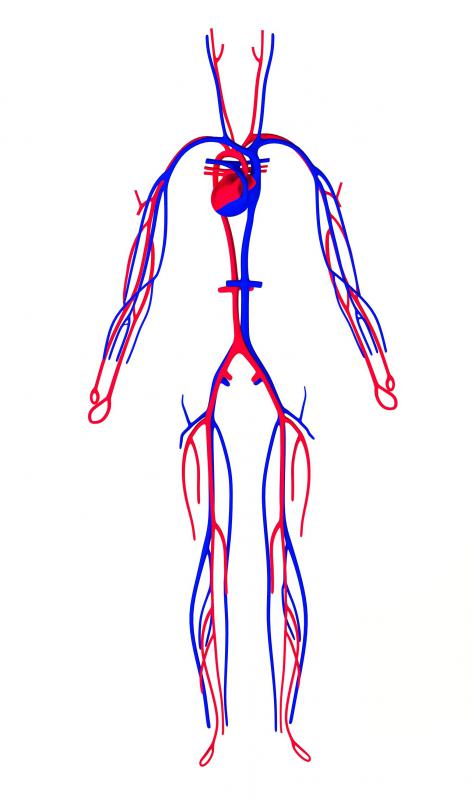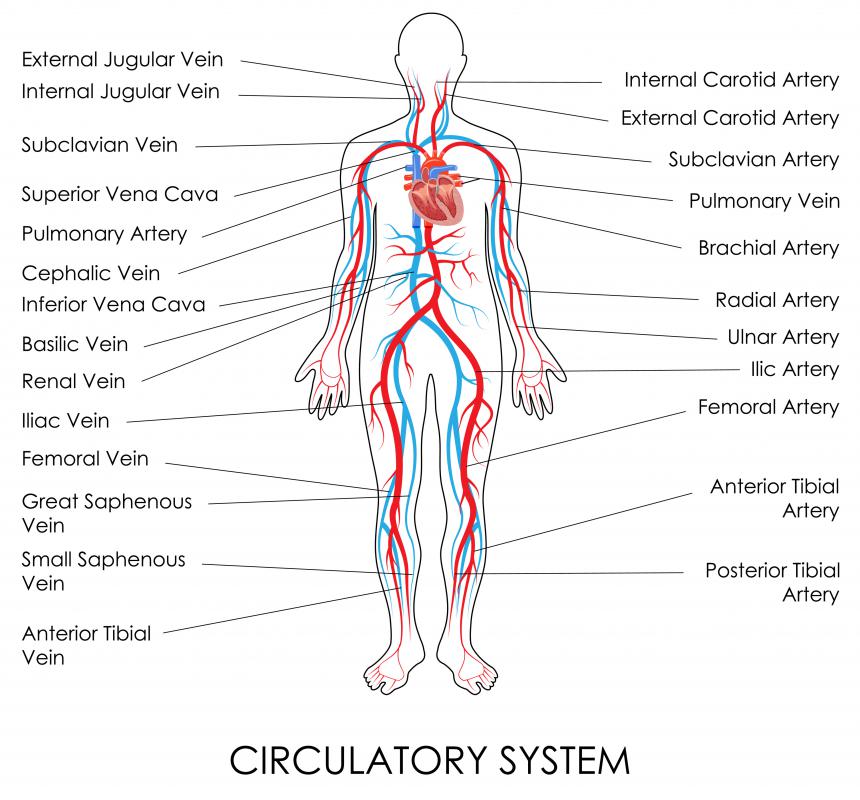At TheHealthBoard, we're committed to delivering accurate, trustworthy information. Our expert-authored content is rigorously fact-checked and sourced from credible authorities. Discover how we uphold the highest standards in providing you with reliable knowledge.
What are Venules?
Venules are a type of blood vessel found within the circulatory system. All blood vessels transport blood either from the heart to the body or from the body back to the heart. Arteries and arterioles transport blood from the heart out to the body, while veins and venules transport the blood back to the heart.
The circulatory system is made up of arteries and arterioles, veins and venules and capillaries. As the blood vessels get further away from the heart, they branch out to form smaller vessels. Capillaries are the smallest blood vessels. They are only one cell thick and their walls are also very thin. This allows oxygen to move out of the blood into the surrounding cells and carbon dioxide to move from the cells to the blood.

Arteries and veins are the largest blood vessels and are found nearest the heart. They branch out to form smaller arterioles and venules. The capillaries act as the link between the arterioles and venules, making the circulatory system a complete system for blood flow.
Venules link the capillaries to the veins when blood is being transported back to the heart and lungs. A vein is much larger than a venule and can carry a much higher volume of blood. Many venules will join with a single vein to transport the blood.

Most of the blood that is transported by the venules is deoxygenated blood. This means that the blood passed through various tissues and organs within the body and oxygen has passed from the blood into the cells of the body. The blood must now travel back to the lungs so it can pick up more oxygen to take back out to the body.
When blood leaves the heart, it is pumped around the body by the contractions of the heart, but the same is not true for blood returning to the heart. The blood flow within veins and venules is a lot slower than in arteries and arterioles. The blood is actually pumped by contractions in muscles in the extremities, the legs for example.

Most blood is flowing against gravity when it is traveling back to the heart and lungs. Semi-lunar valves are present within each venule and vein to stop the blood from flowing back down the vein or venule. These valves are necessary because the blood is not being pumped as hard and to counteract the effects of gravity on the slower moving blood.
AS FEATURED ON:
AS FEATURED ON:














Discussion Comments
Hello. what happens when venules combust?
@extrordinary-- Venules have walls that are three layers thick. The layers are made from various types of cells and tissue. From what I can remember from my class way back when, their walls are thinner than arterioles. Since the walls are so thin, the venules are porous for the cells and fluids to move easily from the bloodstream through the walls.Hope this helps.
Thanks for this article -- it's certainly much clearer than the section on venules in my biology textbook! I was wondering if you could tell me a little bit more about the structure of venules though. I have to fill in a diagram about them on a test next week, and I'd like to be a bit more prepared.
Thanks!
Post your comments